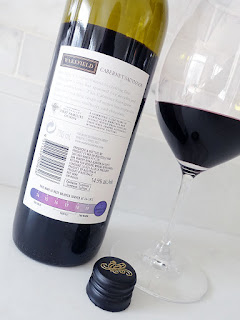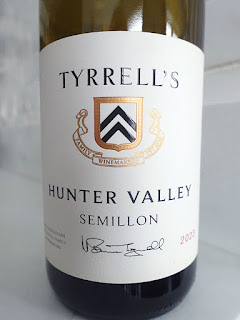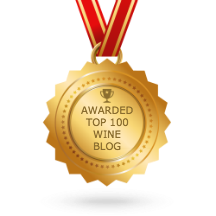white wine review is a delicious Sauvignon Blanc from Margaret River in Western Australia that made its debut at the LCBO in last month's LCBO VINTAGES New Release Collection on .
It is produced by Miles From Nowhere, a wine brand established in 2007 by Franklin & Heather Tate. Franklin began working in wine when he planted his parents' first vines in 1973, while the couple have been working in the wine industry together since 1986. Miles From Nowhere is a dedication to the Tate family's patriarch that arrived in Australia from Ukraine over 100 years ago, and felt every bit 'miles from nowhere'. The brand's name also alludes to the geographic remoteness of the vineyards situated in the beautifully isolated Margaret River wine region of Western Australia.
The Tate family's goal with Miles From Nowhere is for every glass to express their love and passion for the Margaret River region. Frederique Perrin is the Director of Winemaking at Miles From Nowhere, and her philosophy is based on the belief that most wines are made to be shared and drunk. Additionally, no great wine is made in the cellar, as it all begins with viticulture, and then focusing on crafting wines that capture the soul of the terroir.
Miles From Nowhere has three ranges of wines - the icon wine range titled "Origin of Now", the middle-tier Best Blocks range, and the entry-level Estate Range. This particular white wine is from their Estate Range and is crafted using 100% Sauvignon Blanc that was grown in their vineyards in Margaret River.
For this particular vintage, they selected their best blocks of the year, with about 70% coming from their Wilyabrup property and the remaining from their Karridale property. The Sauvignon Blanc in Wilyabrup is planted in an east-west orientation, by the property dam, and cane pruned. It ripens slowly due to the cool nights and foggy mornings, and produces moderate yields. The Sauvignon Blanc in Karridale is oriented north-south, on a slightly south-facing slope; therefore, the fruit is exposed to the sun by several leaf plucking passes throughout the season to ensure even ripening, while the very cool nights preserve the crisp acidity all the way to the harvest. To craft this wine, the grapes were harvested at night and rushed to the winery for pressing while cold. After pressing, the juice was racked off the majority of its solids, leaving some fine lees to bring to the ferment, which was long and cool (about 12°C), to preserve the fine fruit aromas. The wine was aged sur lees for about 3 months, then filtered and bottled in early winter.
The growing season in Margaret River was mild, with harvest starting a bit later than normal, and in great weather conditions. All the white varieties were allowed to optimally ripen and could be harvested at their peak flavour profile. For this wine, the Sauvignon Blanc from both sites was picked on the 3rd of March, with the Wilyabrup fruit displaying intense tropical fruit characters, while the Karridale fruit was added to the blend to provide refined focus and length. From a fantastic vintage, let's see how this 2023 Sauvignon Blanc from Margaret River is tasting tonight...
Enclosed by screw cap, this has a fragrant, highly aromatic nose that delivers a fine mix of lime/lemon citrus, leesy mineral, and garden herb aromas flecked with ripe tropical fruits (guava, kiwi), jalapeño, and spice. The dry, medium+ weighted palate has good density and concentration that supports the delicious lime/lemon citrus, guava, kiwi, garden herb, leesy mineral, and spice replays. It's well-balanced throughout with clean, fresh, and vibrant acidity. More lime citrus and guava with touches of leesy minerals linger on the long, crisp finish. Highly recommended buy! Score: 89 pts
Other lovely wines by Miles From Nowhere can be ordered through their Agent - Dionysus Wines & Spirits.
It is produced by Miles From Nowhere, a wine brand established in 2007 by Franklin & Heather Tate. Franklin began working in wine when he planted his parents' first vines in 1973, while the couple have been working in the wine industry together since 1986. Miles From Nowhere is a dedication to the Tate family's patriarch that arrived in Australia from Ukraine over 100 years ago, and felt every bit 'miles from nowhere'. The brand's name also alludes to the geographic remoteness of the vineyards situated in the beautifully isolated Margaret River wine region of Western Australia.
The Tate family's goal with Miles From Nowhere is for every glass to express their love and passion for the Margaret River region. Frederique Perrin is the Director of Winemaking at Miles From Nowhere, and her philosophy is based on the belief that most wines are made to be shared and drunk. Additionally, no great wine is made in the cellar, as it all begins with viticulture, and then focusing on crafting wines that capture the soul of the terroir.
Miles From Nowhere has three ranges of wines - the icon wine range titled "Origin of Now", the middle-tier Best Blocks range, and the entry-level Estate Range. This particular white wine is from their Estate Range and is crafted using 100% Sauvignon Blanc that was grown in their vineyards in Margaret River.
For this particular vintage, they selected their best blocks of the year, with about 70% coming from their Wilyabrup property and the remaining from their Karridale property. The Sauvignon Blanc in Wilyabrup is planted in an east-west orientation, by the property dam, and cane pruned. It ripens slowly due to the cool nights and foggy mornings, and produces moderate yields. The Sauvignon Blanc in Karridale is oriented north-south, on a slightly south-facing slope; therefore, the fruit is exposed to the sun by several leaf plucking passes throughout the season to ensure even ripening, while the very cool nights preserve the crisp acidity all the way to the harvest. To craft this wine, the grapes were harvested at night and rushed to the winery for pressing while cold. After pressing, the juice was racked off the majority of its solids, leaving some fine lees to bring to the ferment, which was long and cool (about 12°C), to preserve the fine fruit aromas. The wine was aged sur lees for about 3 months, then filtered and bottled in early winter.
The growing season in Margaret River was mild, with harvest starting a bit later than normal, and in great weather conditions. All the white varieties were allowed to optimally ripen and could be harvested at their peak flavour profile. For this wine, the Sauvignon Blanc from both sites was picked on the 3rd of March, with the Wilyabrup fruit displaying intense tropical fruit characters, while the Karridale fruit was added to the blend to provide refined focus and length. From a fantastic vintage, let's see how this 2023 Sauvignon Blanc from Margaret River is tasting tonight...
Tasting Note:
MILES FROM NOWHERE MARGARET RIVER SAUVIGNON BLANC 2023 - Western Australia (#41794) (XD) - $18.95Enclosed by screw cap, this has a fragrant, highly aromatic nose that delivers a fine mix of lime/lemon citrus, leesy mineral, and garden herb aromas flecked with ripe tropical fruits (guava, kiwi), jalapeño, and spice. The dry, medium+ weighted palate has good density and concentration that supports the delicious lime/lemon citrus, guava, kiwi, garden herb, leesy mineral, and spice replays. It's well-balanced throughout with clean, fresh, and vibrant acidity. More lime citrus and guava with touches of leesy minerals linger on the long, crisp finish. Highly recommended buy! Score: 89 pts
Other lovely wines by Miles From Nowhere can be ordered through their Agent - Dionysus Wines & Spirits.


























































